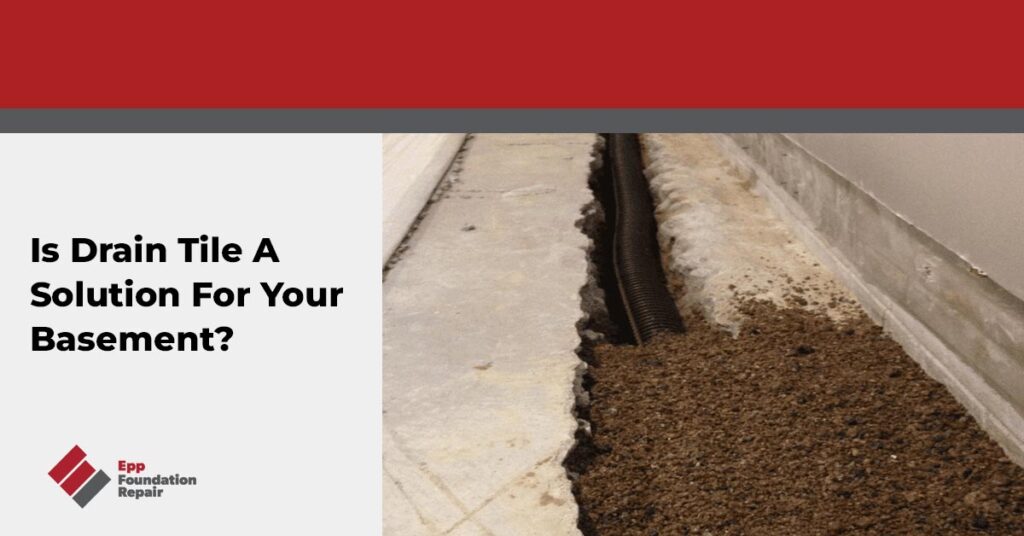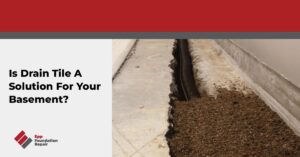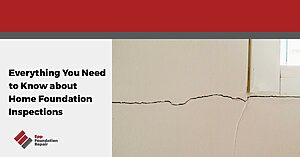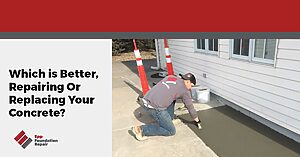Drain Tile can be a life saver when it comes to maintaining your foundation dry and free of water. If you are currently dealing with a wet basement, installing drainage tile might be the solution for you. This system allows for collected water to flow away from your foundation. Drain tile can also be known as weeping tile, French drain, drainage tile, perimeter drain, and foundation drain. All of these names are under the same umbrella for this drainage system.
The purpose of drainage tile is to avoid water build up in the soil around and under the foundation of your home. The most important function of foundation drain, is that it takes excess moisture in the ground and transports it away from the foundation; guaranteeing that your homes’ foundation stays dry and free of moisture.
This article is designed to explain and inform the homeowner on some of the most frequently asked questions about foundation drainage. We will go in-depth as to what drain tile is, how to install it and the average costs of drain tile installation.
What is a drain tile?
Drain tile is a waterproofing solution that stops water from accumulating near the foundation of your home. Drainage tiles can either be an interior or exterior feature depending on the need of the home. The function of a drainage system can be summed up in three simple steps.
1. Takes excess moisture from the foundations base.
2. Redirects it to a sump pump.
3. the sump pump carries the water away from the structure.
Interestingly enough, drain tile does not include actual tiles, this is just simply a misnomer in the name. Instead imagine a foundation drainage system as a rigid or flexible perforated pipe.
Check out our blog on French Drain Basement Waterproofing for more information on the installation processes.
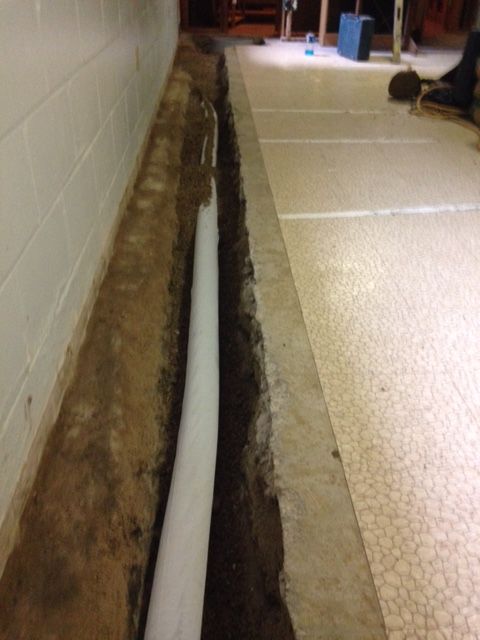
If you are a new homeowner, check to see if your home already has an exterior drainage system. New US regulations require that homes have a drain tile system already installed. However, if your home does not have a foundation drain system, no need to worry as these can be added to existing homes.
How to install drain tile in basements:
Drain tiles inside a basement or slab can also be referred to as an interior foundation drain. The reason why it is called an interior drain is system is because it is installed beneath the basement floor/slab. Often times, this installation method is for older homes that do not have an external drain system.
The procedure for installation is:
1. Clear out the basement, including any floor coverings.
2. Utilize a jackhammer to break up the floor. This is typically done by a foundation repair contractor.
3. Dig a trench around the basement’s inside perimeter. At the same time they will install and make room for a sump pit.
4. Place the drain tile pipe (rigid or flexible) in the trench.
5. Finally, the floor is replaced.
This new drain tile system will now transfer water into the sump pit. That collected water will now be pumped out with the sump pump and it will be taken out and away from the home.
Concerned about clogging? Here at EPP Foundation Repair, we have yet to receive a call about a clogged foundation drain system. Nevertheless, due to the nature of the building of this interior drain tile, a repair contractor can access the entire system through the sump pit.
Rigid vs. Flexible Drain Pipe
We have been mentioning two types of pipe in this article. The pipe types slightly affects the installation process and how much the cost of the overall job will be for the drain tile installation process.
Rigid Drain Pipe refers to PVC pipes. The pipe will have small holes on one side. When the pipe is placed in the trench, ensuring the small perforations are facing downward, it helps the water get into the pipe through the small holes. In order to make adequate direction changes the pipe will need to be fitted for corners and changes in direction.
Corrugated flexible drain pipe has tiny slits over the pipe. These slits allow moisture to get inside every part of the pipe, but it prevents soil from coming inside. This is crucial as it does not allow the pipe to become clogged with dirt. Corrugated flexible pipe is much less expensive than its counterpart PVC rigid pipe. The other main difference between flexible and rigid pipe, is that flexible pipe can bend around the corners with ease. Corrugated flexible pipe is also very durable, it can withstand very high temperatures and very low temperatures.
How to install drain tile around foundation
Exterior drain tiles, or drains around the foundation of the home are more commonly seen in newer construction. Why? In newer homes, exterior drain tile should have been installed, as US regulations now requires all new construction to have them.
Older homes can certainly have exterior foundation drains installed, however its is much more work than installing an interior drain. The reason is that it requires more extensive excavating and digging. Here are the steps for installing an exterior drain:
1. Excavating down to the footer
2. Dig a trench along the footer
3. Excavate the area for a sump pit (if necessary)
4. Place a perforated pipe into the trench and cover it with gravel and a special fabric
5. Cover the pipe with soil
6. Replace the excavated soil.
Now what the drain system will do is that it will ensure that any excess water in the soil will either drain away from the foundation-via gravity or sump pump– and be expelled. Both interior and exterior drain tile systems require a lot of meticulous work, do not attempt on your own. Call a foundation professional.
Drain tile installation cost
In order to get an exact cost on a drain tile system, whether it is interior or exterior depends on a number of factors. Some of the factors or considerations are, what kind of system will the homeowner use, it can be interior or exterior drain tile installation, flexible or rigid piping, and whether this will be for a house under construction or an existing home. Another factor to consider is whether you want to fix basement water intrusion with a foundation waterproofing membrane, which can prevent further moisture into your home.
Is this a DIY project? Potentially, the decreased costs of doing it yourself can be very tempting. Unfortunately we do not recommend that you take on this project yourself. Installing a drain tile system requires major construction in your home. This is certainly a job for professionals, you would not want to have repercussions in the future that will cost even more down the road.
In order to have an accurate estimate on the cost of drainage system installation is to have a professional come to your home. An experienced contractor can inspect your home and give you an estimate taking all of these factors into consideration.
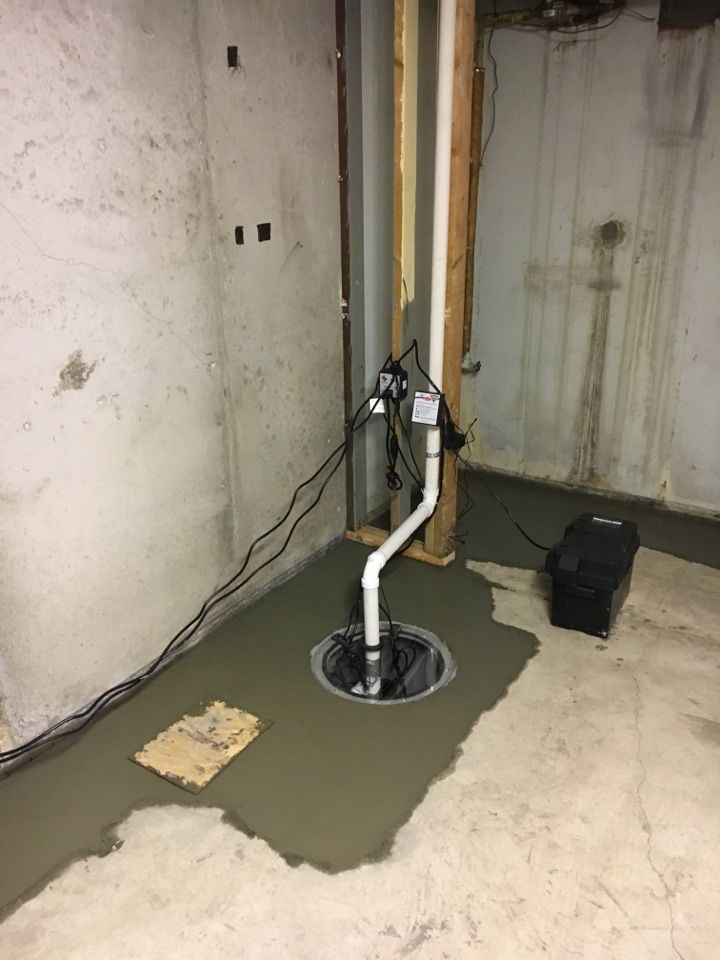
Drain tile installation can be an important project to ensure proper drainage for your home. It can be the deciding factor for the future if you will have foundational issues or not. Drain tiles can ensure that your home will stay dry for a long time. Below is a very informative video, where interior drain installation is explain by our very own, Dave Epp. If you have a wet basement or are in need of drain tile installation and you’re in our service area in Nebraska, Iowa, Kansas, and Missouri, contact us for a free estimate.

